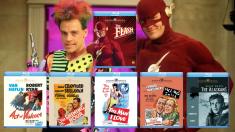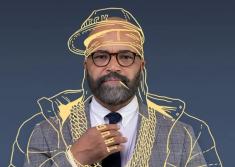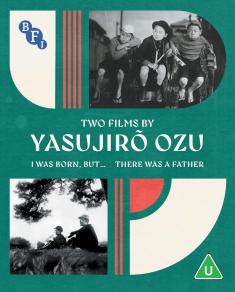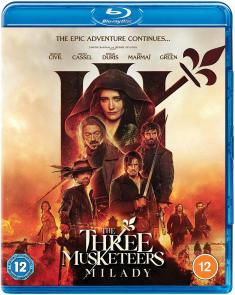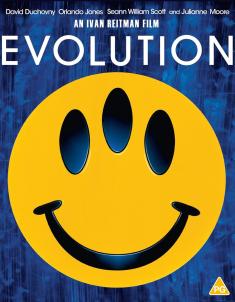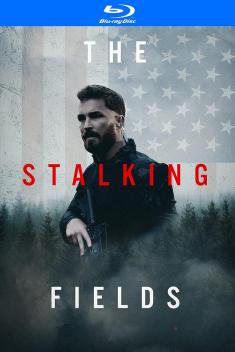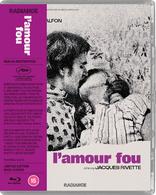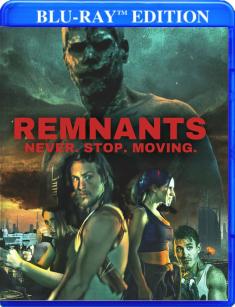André Gregory & Wallace Shawn: 3 Films
Overview -
Portions of this review also appear on our coverage of the individual releases of 'My Dinner With Andre', 'Vanya on 42nd Street', and 'A Master Builder'.
When André Gregory and Wallace Shawn—theater directors, writers, actors, and longtime friends—sat down for a stimulating meal in 1981’s 'My Dinner with André,' they not only ended up with one of cinema’s unlikeliest iconic scenarios but launched a film collaboration that would continue to pay creative dividends for decades. The subsequent projects they made together for the screen—1994’s 'Vanya on 42nd Street,' a passionate read-through of Anton Chekhov’s Uncle Vanya, and 2014’s striking Henrik Ibsen interpretation 'A Master Builder'—are penetrating works that exist on the edge of theater and film, and that both emerged out of many years of rehearsals with loyal troupes of actors. Gregory and Shawn’s unique contributions to the cinematic landscape are shape-shifting, challenging, and entertaining works about the process of creation.
Storyline: Our Reviewer's Take
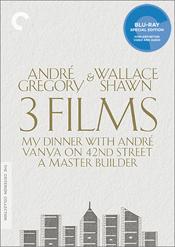
‘My Dinner With Andre’ is one of those movies which is probably more discussed than actually seen, as is often the case with most art films. I recall watching Gene Siskel and Roger Ebert rave about this film during their old, PBS-based ‘Sneak Previews’ show, yet I opted out of catching it in my local art-house theater in favor of repeat big-screen viewings of ‘Superman II.” As the years went by, this highly acclaimed work by director Louis Malle fell off my “must-see-movies-before-I-die” bucket list... until now.
The story is straightforward and simple: Wallace Shawn is a modestly successful playwright and actor struggling to get by in his “hometown” populary known as New York City. He is invited to dinner at some hoity-toity restaurant (you know, the kind that doesn’t have pictures on the menu) by his colleague Andre Gregory, an accomplished theatre director. Wally initially dreads the meeting, based on rumors regarding Andre’s strange emotional state and questionable behavior despite his family responsibilities. When the two meet up, Andre brings his friend immediately up to date on his recent trips to foreign countries, interaction with different cultures, exposures to different lifestyles and creative endeavors. His observations initially focus on artistic accomplishment and angst, before moving more emotionally into one’s humanity. When Wally finally responds, it’s with a less pretentious, and more down-to-earth outlook, and the two politely probe into each other's ideas and beliefs. In the end, Wally goes back home, more thoughtful and perhaps inspired by his conversation with Andre.
Before addressing the didactic material, I should note there is much to appreciate about the ‘My Dinner with Andre.’ The cinematography is consistenly compelling, indoors and outside. Wallace takes us on a brief tour around early 1980s New York as he heads to his dinner date.The neighborhoods are presented in brief, but eye-catching images of graffiti-laden subways and dark blues and greys everywhere. Once inside the restaurant, the intimacy of their dinner is captured in close-ups and medium shots which make viewers as comfortable as the rest of the diners. The conversation flows freely and without distraction, with the deliberate exception of a stuffy waiter who is seems to bemused by the two. The characters speak with a realistic rhythm and natural delivery, despite the philosophical weight and academic complexity of their topics. In many movies, there are many times where dialogue sounds forced, or overly-mannered, no matter how expertly written. For example, ‘Glengarry Glen Ross’ (a favorite of mine, incidentally) occasionally contained scenes which were arguably better suited to the stage than the silver screen. ‘My Dinner With Andre’ has no such faults.
As to the film itself, naturally, there is more to 'My Dinner with Andre' than that which any synopsis could describe, especially since both East Coast-based actors are working from their own screenplay. The topics covered can’t be simplified or resolved in any manner short of a lifetime, or at least within a semester or two of community college. Whether their conversation holds your attention or bores you to tears depends on how you feel about such verbal indulgences. I do recall reading a pithy review following its release which basically stated “it’s about two pretentious artsy-types who bullsh-t their way through dinner on subjects we’re supposed to find deep and meaningful.” While I can’t catergorize the movie in terms that crude and simplistic, I admit that I can’t appreciate this film nearly as much as others have. Call it an unreasonable reaction to hype, or a sign of the times, or the results of being more accustomed to (or corrupted by) the sex and violence of Tarantino-esque dialogue with lots of four–letter words and contrived witticisms, but ‘My Dinner With Andre’ doesn’t exactly thrill or enlighten me in any life-changing way. There’s no doubt that it is an original work for American cinema, and that it provides a lot of food for thought, especially during the last half when Wallace Shawn gets his chance to say a few words.
In the meantime, those who are more familiar with Pavel Chekhov of the USS Enterprise than Anton Chekhov of ‘Uncle Vanya’ or who have read more Stan Lee then Leo Tolstoy, may find the barrage of topics and references (surrealists, Antoine de Saint Exupery, Tibetan swaztikas, William Blake, Japanese monks, “painful prostrations,” Albert Speer just to name a scant few) unleashed by the soft-spoken Andre to be more than a bit much even for the most proficient of Wikipedia users. As Andre goes on and on about his visits to foreign countries and emotional experiences (in which uncontrollable crying seems to be a running theme), the cynic inside of me wanted to dismiss it all as just a hippy-dippy drug trip. Indeed, the first hour of the film made me wonder just how Wally was able to tolerate all this long-winded story-telling. I was more touched by Wally’s level-headed (though less daring) observations that climbing Mount Everest for inspiration simply isn’t practical for most people, and that enjoyment of life may include enjoying a cup of coffee or finding comfort in an electric blanket. Overall, their discussion is thought-provoking, but probably too esoteric to your average Joe Six Packer, and too trivial to the so-called academic elite. For mainstream movie-goers, however, 'My Dinner with Andre' succeeds in achieving an elevated standard of cinematic art without excess. By the end of the film, even I became much more involved and appreciative of their dinner conversation, though I would have probably ordered the chicken fried steak instead of the quail.
'Vanya on 42nd Street' is a brilliant blend of film and theatre all in the span of two hours. Andre Gregory along with several A-list actors, including Julianne Moore, George Gaynes, Larry Pine, and Wallace Shawn, all came to a very small run-down theatre in New York City, specifically on 42nd Street, to study the work of Anton Chekhov, specifically his play 'Uncle Vanya'. The actors and director spent the better part of three years, in between everyone's schedule, studying the playwright and rehearsing his play.
Luckily for us, director Louis Malle caught every bit on film, from the table reads, rehearsals, and everything in between. At one point, the actors actually performed the play in front of a very small invited audience. However, this film is not about the final performance, but rather about how the play was made and developed over time, and was such a delight for any fan of film or theatre to witness. We literally get to see these fine actors sit around a table as well as block the scenes for 'Uncle Vanya'. During this process, these actors bond as well as struggle with their roles. More often than not, their reactions and emotions are real here, which makes this cast so wonderful to watch.
If you're unfamiliar with the play, 'Uncle Vanya' follows an older guy by the name of Serebryakov (George Gaynes), who comes back to his rural estate with his second much younger wife Yelena (Julianne Moore) to see how things are going along. Uncle Vanya (Wallace Shawn), the brother-in-law of Serebryakov's first wife, runs and manages the estate for a very cheap rate. Sooner than later Serebryakov announces that he plans to sell the estate, which makes everyone angry, including Vanya's sister Sonya, who is in love with Dr. Astrov (Larry Pine).
Meanwhile, Vanya has feelings for Yelena. Both Vanya and his sister Sonya appear to be infatuated with people they cannot have. This only adds to this discomfort to everyone trying to deal with the upcoming sale of the estate. It's not so much about the actual story here, as much as it's about the coming together of these amazing actors, pulling off this play and their long hours of rehearsal. There are some funny moments throughout as well, although it falls on the bit of the dark side.
The screenplay by David Mamet is spectacular and all of the performances are Oscar worthy, although not many people have seen or heard of this movie. Unfortunately, this was Louis Malle's last film before he died, but going by his fascinating and great resume, 'Vanya on 42nd Street' was an excellent film to go out on. 'Vanya on 42nd Street' is an amazing adaptation of Anton Chekhov's 'Uncle Vanya' play. For fans of the theatre and film, specifically Wallace Shawn and Louis Malle will love it. For the rest of you, it might go over your head. The acting in the film is superb and is where the real strength of the film lies.
Even though actor-writer Wallace Shawn adapted 'A Master Builder' from the Henrik Ibsen play 'Master Builder Solness' and the production was created for the stage (though never officially performed onstage) by Shawn's longtime collaborator André Gregory (My Dinner with André, Vanya on 42nd Street), the finished product by Academy Award-winning director Jonathan Demme doesn't look or move like a stage play at all. Yes, most scenes boil down to just two individuals talking with one another – usually about the past or some transcendental experience, like erecting beautiful spires and hanging wreaths from them as master builders are apparently wont to do – but the film doesn't have that sense of not knowing what to do with itself so many films based on stage plays have. You know the feeling: when you're standing listening to someone speak and you are suddenly aware you have no idea what to do with your arms. So, instead of just crossing them comfortably across your chest, putting your hands in your pockets, or just letting your limbs hang instinctively at your side, you fidget about; you try leaning this way or that, all in a futile effort to look natural. Of course, in doing this, you begin to look like the least natural person on the planet.
That is generally the case with a lot of films adapted from stage plays. But the same is simply not true with Demme's direction here. The story of a cruel but brilliant architect Halvard Solness (Shawn) and the fever dream reflection on his successes and failures is presented through the proficient use of handheld cameras, as every scene plays out within the confines of the same expansive house. It is both loose and claustrophobic at the same time. Demme's active lens oftentimes compresses his actors into a tight close-up, creating a sense of forced intimacy and an even greater sense of the need to escape. And thanks to Shawn's own clever addition to the story – that has the protagonist ostensibly at the end of his life – the need to escape is felt pervasively from the start.
And by the time the drama begins to turn the rusty, cobwebbed cranks of the old architect's corroded state of mind – thanks to the unexpected presence of twenty-two-year-old Hilde (Lisa Joyce) – that need to escape leaps from the screen, directly into the lap of the audience. 'A Master Builder' is about one man's possibly subconscious examination of his life in its final moments, and as such, the scrutiny under which Solness finds himself feels raw, inflated, and figurative as the conversation he enjoys with the enigmatic Hilde vacillates from introspective to worshipful to judgmental, often in the same scene.
In a sense, Hilde is haunting Solness. Proclaiming to have witnessed the architect place a wreath atop a great spire he once built, after he kissed the then-twelve-year-old girl and promised to return in ten years to make her a princess, she is both a figure from his past and a foreboding presence with regard to his future. And given the film and play's not-so-subtle subtext on the fear of being replaced by the younger generation, Hilde's presence as a moonfaced young woman with flowing blonde locks in a pair of short shorts is more than merely aesthetic.
Joyce is a colossal presence onscreen and not only because Demme fills frame after frame with her wide-eyed visage. She has the kind of smile that seemingly cannot be produced reflexively; it, like everything Hilde (and Joyce) does, is calculated to such a precise degree that the very same smile suggests something else behind it. And that smile comes easily, perhaps because she has not lived around the increasingly selfish, spotlight-hungry Solness. Unlike Solness' former competitor-turned underling Knut Brovik (André Gregory) and Knut's son Ragnar (Jeff Biehl), or Solness' still-grieving wife Aline (Julie Hagerty), Hilde doesn't know what it means to live life under Master Builder Solness' enormous shadow.
Or maybe, as a potential figment of his dying brain, Hilde knows all too well. And that is where 'A Master Builder' becomes more fascinating than a simple stage-to-screen production. The entire film is as mercurial as the flaxen-haired stranger who comes to town. Demme, Shawn, and Gregory have combined to create an oddly unfixed film that even though it takes place in the confines of a single house, feels instead like a brightly-lit dreamscape, one in which sunlight streaks through gauzy windows, from which characters marvel at unseen houses and their magnificent spires. There is an entire world outside the rooms in which the narrative unfolds, but the physical confinement of the four walls of Solness' home becomes oppressive in the same way his selfish and demanding personality is. At a certain point, the only way out for anyone (Master Builder Solness included) is by following the old architect out the front door.
'A Master Builder' is slight in one sense and substantial in another. The performances are all turned up to eleven, making an otherwise quiet film about the fear of becoming useless, irrelevant, and impotent seem far louder and aggressive than it might otherwise be. It's an interesting approach, shaking someone rather than gently tapping them to get their attention, and it seems to work here, for the most part. Demme is adept at making the characters come alive onscreen, but in the end, the confinement of the setting unbalances the weight of the acting so that the mastery of the performances speaks more to the actor's craft than the narrative itself.
Video Review
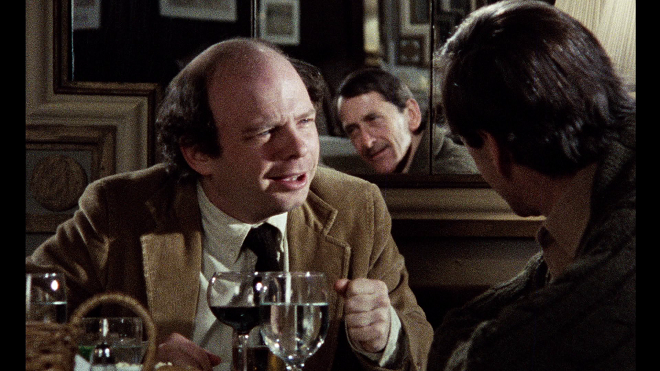
'Vanya on 42nd Street' comes with a fantastic 1080p HD transfer and is presented in 1.66:1 aspect ratio. In fact, this video presentation might just be flawless. According to the Criterion booklet, this video presentation was supervised by director of photography Declan Quinn and is a new digital transfer in 2K resolution from the original 16mm negative as well as the 35mm interpositive. All of the scratches, dirt, and debris were manually removed as well. The detail is sharp and vivid throughout in this new transfer.
Closeups show every individual hair, makeup blemish and each imperfection on every piece of architecture and theatre prop. It's outstanding and gives the image tons of depth. Colors are simply delightful and pop off screen. There are tons of very warm and natural colors that are all well balanced and saturated, without any color reproduction issues. There is a very nice layer of grain that keeps the filmic look and never that digital feel. The skin tones are natural and the black levels are always deep and inky with zero shadowing problems. There were no issues with banding, aliasing, or video noise either, leaving this video presentation from Criterion with perfect marks.
Given that the film was released in 2013, the image is unsurprisingly sharp, detailed, and warm. The color palate for the film is mostly soft white, yellow, and light brown, all of which lends an ethereal quality to the film and helps to underline the dreamlike nature to so much of the narrative. Contrast quality is apparent in nearly every frame, as although there are hardly any dark shots, the use of shadow is important, but not nearly as important as the way light cascades in from the massive windows of Master Builder Solness' house. This light is warm and inviting; it never looks blown out and therefore the image remains crystal clear from start to finish.
There is plenty of fine detail present in nearly every scene, and with the amount of close-ups the film has, this factor is quite important. Facial features and clothing textures are on full display, while background elements are visible when the otherwise shallow depth of field allows them to come into focus. Mostly, though, the image here is concerned with presenting a pristine version of the film and it certainly succeeds in doing so.
Audio Review
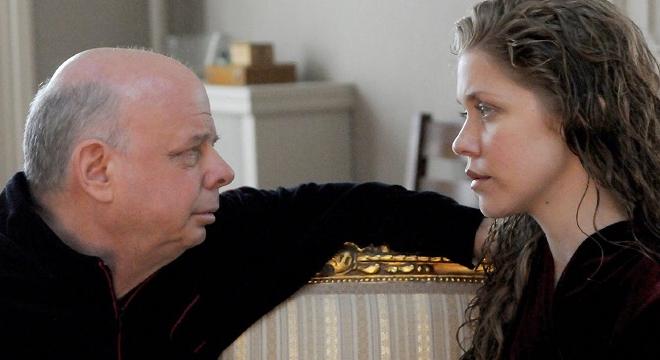
‘My Dinner with Andre’ is presented in Dolby Digital mono sound, where voices are heard clearly and distinctly, even through the most tinny of built-in television speakers. I detected no extraneous noise or artifacts during my viewing, where the volume was kept at a moderate level. Naturally, there is no real bass to speak of, and nearly every sound element is presented in the mid-range.
Playing this soundtrack through a more revealing audio system does reveal a hollow thinness in the recording of voices and an shrillness to the outdoor sound effects. The piano piece which ends the movie (“First Gymnopedie” by Erik Satie and played by Joseph Villa) however is presented quite nicely and gives the ending additional emotional weight. Despite the modest dynamic range and obvious lack of dimension to the sound, the single-channel audio is perfectly suited for a film of this nature, where intimacy is preferred over bombast.
This release comes with a lone English LPCM 2.0 audio mix and for what it is, sounds great. According to the Criterion booklet, this audio mix was remastered at 24-bit from the original stereo track rom the original 35mm audio track. All of the pops, cracks, and hiss were manually removed as well. This is a standard track of dialogue, however, it sounds excellent.
There are no gun shots or explosions in this movie, so don't expect a wide dynamic range or a ton of loud or robust moments of sound effects or ambient noises. It's basically all dialogue with a small amount of a jazz score sprinkled throughout. There was really no immersion either, but that's how this audio track is made. That all being said, the dialogue is always crystal clear and easy to follow. It's layered and has some great directionality as well. As far as dialogue goes, this is as good as it gets.
The DTS-HD Master Audio 5.1 mix is a full-bodied mix, even though it has very little to do. There is almost nothing in the film's soundtrack aside from the actor's voices. Thankfully, the mix does a great job of presenting them with the utmost clarity. Even when two actors are talking over one another (which rarely happens, actually) the sound does a good job of presenting the audio without two or more voices vying for control. Still, with this being almost all the mix has to offer, it had better be crystal clear.
There are some instances where directionality is used with some intent on making the mix into something more lively and immersive. As the camera shifts, so too does the location from which the voice is emanating. Rear channels are used subtly, typically to enforce a kind of echo in the master builder's large home.
In the end, this is a fine but unchallenging mix that suits the needs of the film very well.
Special Features
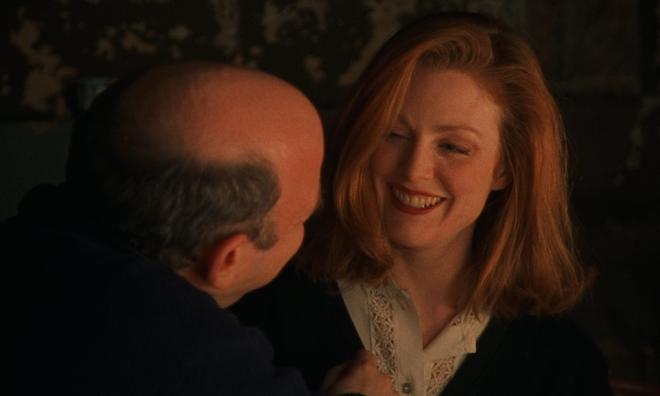
Andre Gregory and Wallace Shawn (HD 1:00:35) - Filmmaker Noah Baumbach interviews the lead actors (separately, unfortunately) in this 2009 featurette specially made by the Criterion Collection. Like the main feature, the interviews are relaxed but filled with details, covering obvious topics such as characterization, rehearsals and line deliveries. Each actor is given nearly equal screen time (naturally, Andre speaks first) and the sound is presented in Dolby Digital mono.
My Dinner With Louis (HD 52:13) - This episode of a BBC program produced in 1982 focuses on the movie and it’s director, Louis Malle. The program is hosted by Wallace Shawn, and runs for less than an hour. It spotlights many of the director’s classic films, and contains a wealth of studious information not typically found in most "behind the scenes" documentaries.
The show has been transferred to 1080p high definition, and presented in its original 4:3 aspect ratio. Overall, it looks surprisingly good for what appears to be an unrestored original source. Excerpts of the film shown in the BBC program are noticeably softer, yet less distracting when it comes to the grain. However, it’s clear that the Criterion Collection transfer of the movie is superior in every other respect.
‘My Dinner with Andre’ A Film By Louis Malle Booklet - Film journalist Amy Taubin offers an 11 page essay entitled “Long Strange Trips” which looks at the movie in-depth and obvious appreciation. Another article, “On the Origins of My Dinner with Andre” is composed of writings by Gregory and Shawn which prefaced the original screenplay. The remaining booklet gives a breakdown of the Blu-ray’s individual chapters, production credits, and digital transfer. The booklet has been designed to resemble a worn manuscript printed as a typewritten font, and adorned with illustrated hole punches and brads, ink which bleeds on the opposite page, as well as food and coffee stains. The presentation was convincing enough to prompt one of my kids to ask, “Eww, just how old is this book?”
Life Like: The Make of 'Vanya on 42nd Street' (HD, 37 Mins.) - In 2011, the cast and crew came together to discuss just how this movie was made and the inspiration for it. Andre Gregory, Wallace Shawn, and Julianne Moore are included here. Definitely worth watching.
Trailer (HD, 3 Mins.) - This is the original theatrical trailer for the film.
Criterion Booklet - The usual excellent Criterion booklet is here with 22 pages that include cast and crew information along with essay by Steven Vineberg and Amy Taubin.
The Ibsen Project (HD, 33min.) - Director Jonathan Demme, André Gregory, and actor-writer Wallace Shawn talk with film critic David Edelstein about the making of 'A Master Builder.'
Hilde and Aline (HD, 33 min.) Actors Lisa Joyce and Julie Hagerty discuss their roles in the film.
Over Time (HD, 53 min.) Fran Lebowitz talks to André Gregory and Wallace Shawn about heir collaborations in theater and film.
Trailer (HD, 2 min.) Trailer for the film
Criterion has knocked this release out of the park once again with three films from Andre Gregory and Wallace Shawn. All three films look excellent and sound great and come with a wealth of incredible extras, all of which are worth watching. This is one Criterion set you shouldn't miss out on. Highly Recommended!
